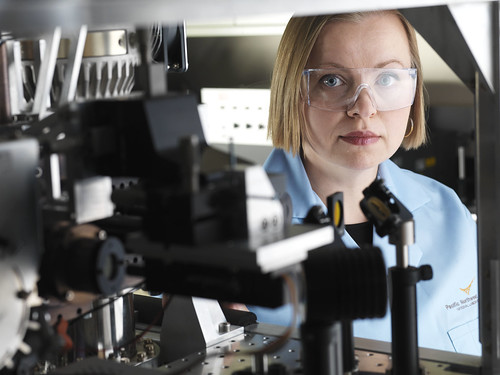Gases drawn into smog particles stay there
February 22, 2012
- Mary Beckman, PNNL, (509) 375-3688
 Download Original Image Download Original ImageSPLAT II provides measurements of particles with unprecedented sensitivity and precision to scientists such as Alla Zelenyuk. |
RICHLAND, Wash. – Airborne gases settle in smog particles from which they cannot escape, according to research published Feb. 21 in the Proceedings of the National Academy of Sciences. The results could explain why pollution computer models underestimate organic aerosols — the major component of smog particles and the least understood component in climate change calculations.
The study, led by University of California, Irvine air chemist Barbara Finlayson-Pitts, combined alpha-pinene, a common ingredient in household cleaners such as Pine Sol and outdoor emissions, with oxides of nitrogen and ozone to mimic smog buildup. Atmospheric chemist Alla Zelenyuk at the Department of Energy's Pacific Northwest National Laboratory evaluated millions of the artificial smog particles one-by-one using a one-of-a-kind, 900-pound instrument known as SPLAT (a single particle laser ablation time-of-flight mass spectrometer).SPLAT lives at EMSL, DOE's Environmental Molecular Sciences Laboratory at PNNL. The researchers also employed a 26-foot-long "aerosol flow tube" at the AirUCI unit.
"Being able to study individual particles gives us so much detail about how pollution evolves," said Zelenyuk. "Incorporating what we found about these particles into computer models will help in modeling pollution and climate as well."
Read the entire release from the University of California, Irvine here.
No comments:
Post a Comment
Note: Only a member of this blog may post a comment.